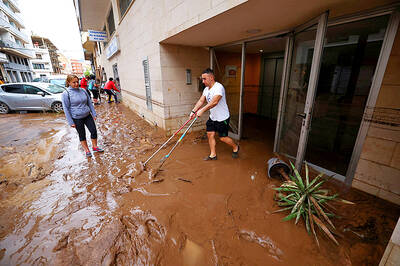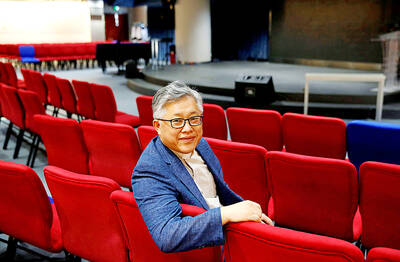Homeopathic products should not be sold in Australian pharmacies because they place consumers at “unacceptable risk,” an independent review of pharmacy regulation for the Australian Department of Health has found.
In his interim report, review panel chairman Stephen King found homeopathy and homeopathic products should be kept out of pharmaceutical benefits scheme-approved pharmacies.
“The only defense put to the panel regarding homeopathy was that it was harmless and able to be used as a placebo in certain circumstances,” the report said. “The panel does not believe that this argument is sufficient to justify the continued sale of these products in pharmacies.”
Ian Carr, a pharmacist and member of Friends of Science in Medicine, welcomed the finding and said homeopathic products could be harmful if used in lieu of evidence-based treatments for serious conditions.
“My biggest complaint about the status of homeopathy is not that people are essentially putting placebos into their bodies, it’s that they are putting their trust in a certain way of thinking that has no evidence base,” he said.
“It means they’re not looking in the right places for information, which is concerning if they are suffering from serious health problems. Yes, there is always a small risk that scientifically proven medicines carry, but those medicines also offer a huge benefit. Homeopathy carries a small or medium risk with no benefit,” he said.
Homeopaths say that illness-causing substances can, in minute doses, treat people who are unwell and dilute these substances in water or alcohol.
They say the resulting mixture retains a “memory” of the original substance that triggers a healing response in the body.
These claims have been disproven by multiple studies.
In 2015 the Australian National Health and Medical Research Council reviewed 225 research papers on homeopathy and found there were “no health conditions for which there is reliable evidence that homeopathy is effective.”
“People who choose homeopathy may put their health at risk if they reject or delay treatments for which there is good evidence for safety and effectiveness,” it said.
An independent company reviewed the council’s analysis and appraised the evidence to prevent bias, drawing the same conclusions.
Carr said the interim report on pharmacy regulation was not tough enough on the wider complementary and alternative medicine sector.
In September last year the Australian government announced a more comprehensive system of post-market monitoring of products, which would provide the Therapeutic Goods Administration with better information about emerging safety issues.
Because of these and other changes under way, the panel had made no further recommendations on complementary and alternative medicine products (CAM), King said.
However, Carr said he would liked to have seen a more critical look at the sale of such products in pharmacies by the panel.
“I’m particularly concerned by pharmacies that place naturopaths in the pharmacy environment, given naturopaths promote treatments that are unscientific and unproven,” he said.
Professor of public health and medicines policy expert Ken Harvey agreed.
“There should be a completely separate section for CAM products and there should be a clear sign in that section that tells customers: ‘These products have not been evaluated by government to see if they work and they may interact with medications. Talk to a pharmacist,’” he said.
The report also found that community pharmacy expenditure and funding was “insufficiently transparent,” a concern given that community pharmacies draw funding from a range of federal, state and territory government programs.
Pharmaceutical Society of Australia (PSA) president Joe Demarte said the interim report had raised some concerning issues for the sector.
“We will consult with members from all areas of practice to comprehensively assess the interim report, which will inform PSA’s detailed response,” he said.

STEPPING UP: Diminished US polar science presence mean opportunities for the UK and other countries, although China or Russia might also fill that gap, a researcher said The UK’s flagship polar research vessel is to head to Antarctica next week to help advance dozens of climate change-linked science projects, as Western nations spearhead studies there while the US withdraws. The RRS Sir David Attenborough, a state-of-the-art ship named after the renowned British naturalist, would aid research on everything from “hunting underwater tsunamis” to tracking glacier melt and whale populations. Operated by the British Antarctic Survey (BAS), the country’s polar research institute, the 15,000-tonne icebreaker — boasting a helipad, and various laboratories and gadgetry — is pivotal to the UK’s efforts to assess climate change’s impact there. “The saying goes

Floods on Sunday trapped people in vehicles and homes in Spain as torrential rain drenched the northeastern Catalonia region, a day after downpours unleashed travel chaos on the Mediterranean island of Ibiza. Local media shared videos of roaring torrents of brown water tearing through streets and submerging vehicles. National weather agency AEMET decreed the highest red alert in the province of Tarragona, warning of 180mm of rain in 12 hours in the Ebro River delta. Catalan fire service spokesman Oriol Corbella told reporters people had been caught by surprise, with people trapped “inside vehicles, in buildings, on ground floors.” Santa Barbara Mayor Josep Lluis

Police in China detained dozens of pastors of one of its largest underground churches over the weekend, a church spokesperson and relatives said, in the biggest crackdown on Christians since 2018. The detentions, which come amid renewed China-US tensions after Beijing dramatically expanded rare earth export controls last week, drew condemnation from US Secretary of State Marco Rubio, who on Sunday called for the immediate release of the pastors. Pastor Jin Mingri (金明日), founder of Zion Church, an unofficial “house church” not sanctioned by the Chinese government, was detained at his home in the southern city of Beihai on Friday evening, said

TICKING CLOCK: A path to a budget agreement was still possible, the president’s office said, as a debate on reversing an increase of the pension age carries on French President Emmanuel Macron yesterday was racing to find a new prime minister within a two-day deadline after the resignation of outgoing French Prime Minister Sebastien Lecornu tipped the country deeper into political crisis. The presidency late on Wednesday said that Macron would name a new prime minister within 48 hours, indicating that the appointment would come by this evening at the latest. Lecornu told French television in an interview that he expected a new prime minister to be named — rather than early legislative elections or Macron’s resignation — to resolve the crisis. The developments were the latest twists in three tumultuous